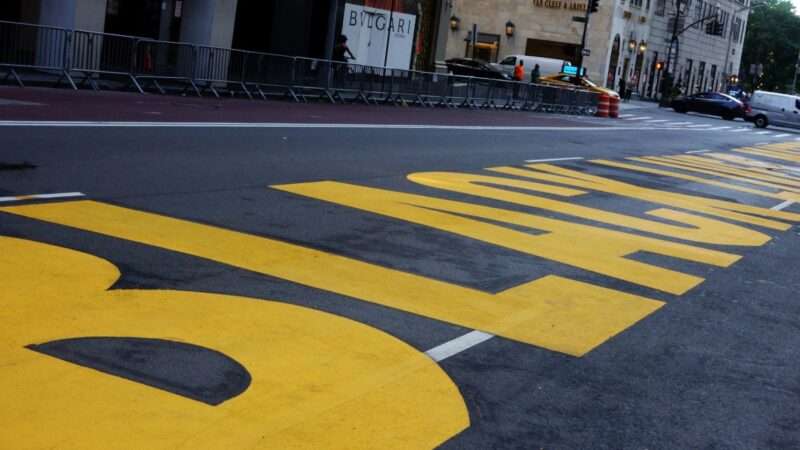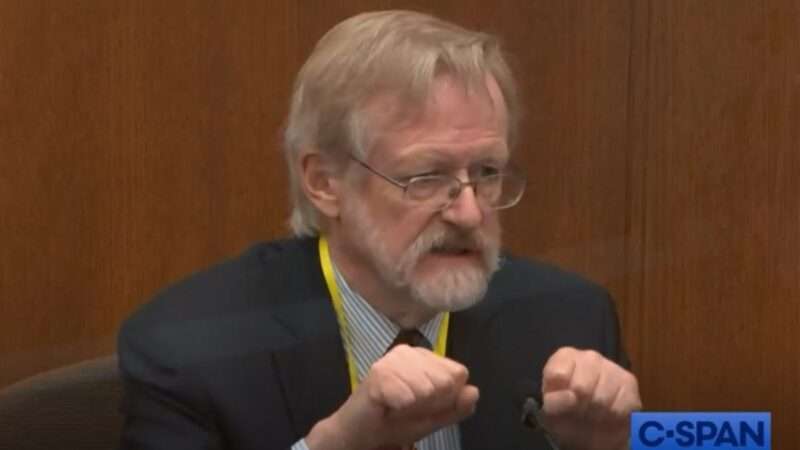Generally speaking, private restaurants, hotels, and the like can’t exclude people based on their race, sex, religion, national origin, and similar attributes. The Equal Protection Clause doesn’t apply to private entities—but state and federal “public accommodation” statutes do.
The federal statute is (Title II of the Civil Rights Act of 1964) is actually pretty narrow: It applies only to discrimination based on race, color, religion, or national origin (not sex or sexual orientation or gender identity or age, for instance), and it applies only to hotels, restaurants, entertainment venues, and some related businesses. (The Americans with Disabilities Act, which focuses on disability, covers many more businesses.) But many state laws are quite broad, both in the range of businesses they cover, and the range of bases for discrimination that they forbid.
But what about discrimination against Republicans or Democrats or people wearing NRA shirts or people who have expressed various political statements that a business owner dislikes? Generally speaking, such discrimination isn’t forbidden by most such antidiscrimination laws (unlike political discrimination in employment, which is forbidden to some extent in about half the states). Still, several important cities, counties, and territories, and (to a narrow extent) one state do ban such discrimination, broadly or narrowly. It’s also possible, though not certain, that California broadly bans at least some such discrimination as well.
In this post, I want to just lay out the prohibitions I’ve found so far, without opining on whether or not they are good ideas. For each provision, I’ll indicate what sorts of political discrimination it forbids; some terms are well-defined in the provision, in which case I’ll include the definition, and some are just left general (e.g., “political affiliation”).
Note that
- different laws may apply to different kinds of businesses, but I won’t focus on that in this list (if you’re interested in how broadly a law applies, you should read it directly);
- it’s not clear that these laws apply to any online platforms (in part because of 47 U.S.C. § 230, in part because of the Dormant Commerce Clause, and in part because of the uncertainty of their own terms)—for now, let’s focus on them as they apply to physical businesses that are physically open to the public;
- it’s not clear to what extent some of these laws restrict businesses’ discriminating based on what you say or display on the business’s property, as opposed to businesses’ discriminating against you because they don’t like what you’ve said elsewhere.
[* * *]
D.C.: D.C. Code § 2-1401.02(25), -1402.31(a) (“political affiliation,” defined as “the state of belonging to or endorsing any political party”).
Maryland counties: Harford County (Md.) Code of Ordinances §§ 95-3, -6 (“political opinion,” defined as “[t]he opinion of persons relating to government or the conduct of government or related to political parties authorized to participate in primary elections in the state”).
Prince George’s County (Md.) Code of Ordinances § 2-186(a)(3), (15), -220 (same as Harford County).
Howard County (Md.) Code of Ordinances § 12.201, .210 (“political opinion,” defined as “the opinions of persons relating to: Government, The conduct of government, Political parties, Candidates for election, or Elected office-holders”).
Durham (N.C.) area: Orange County (N.C.) Code of Ordinances § 12-54 (“political affiliation”).
South Florida areas: Miami Beach (Fla.) Code of Ordinances § 62-31, -87 (“political affiliation,” defined as “ideological support of or opposition to, membership in, or donation of value to an organization or person which is engaged in supporting or opposing candidates for public office or influencing or lobbying any incumbent holder of public office on any single or number of issues which may be before any governmental branch”).
Ft. Lauderdale (Fla.) Code of Ordinances §§ 29-2, -16 (“political affiliation,” defined as “belonging to or endorsing any political party”).
Broward County (Ft. Lauderdale, Fla.) Code of Ordinances §§ 16½-3, -34 (“political affiliation,” defined as “belonging to or endorsing any political party”).
Shreveport (La.): Shreveport (La.) Code of Ordinances §§ 39-1, -2 (“political or religious affiliations”).
Illinois cities: Champaign (Ill.) Code of Ordinances § 17-3, 17-56 (“political affiliation,” defined as “the state of belonging to or endorsing any political party or organization or taking part in any activities of a political nature.”).
Urbana (Ill.) Code of Ordinances § 12-39, -63 (same as Champaign)
Michigan areas: Wayne County (Detroit, Mich.) Ordinance No. 2020-586 (“political affiliation”).
Ann Arbor (Mich.). Code of Ordinances §§ 9:151, :153 (“political beliefs,” defined as “[o]ne’s opinion, whether or not manifested in speech or association, concerning the social, economic, and governmental structure of society and its institutions,” “cover[ing] all political beliefs, the consideration of which is not preempted by … local law”).
Lansing (Mich.) Code of Ordinances §§ 297.02, .04 (“political affiliation or belief”).
Madison (Wisc.): Madison (Wisc.) Mun. Code §§ 39.03(1), (5) (same in relevant part as Ann Arbor).
Minnesota: Minn. Stats. § 604.12 (“wearing clothing that displays the name of an organization or association”).
Seattle (Wash.): Seattle Mun. Code § 14.06.020-.030 (“political ideology,” defined as “any idea or belief, or coordinated body of ideas or beliefs, relating to the purpose, conduct, organization, function or basis of government and related institutions and activities, whether or not characteristic of any political party or group,” including “membership in a political party or group” as well as “conduct, reasonably related to political ideology, which does not cause substantial and material disruption of the property rights of the provider of a place of public accommodation”).
Territories: P.R. Stats. tit. 33 § 4819 (“political ideas”).
V.I. Stats. tit. 10 § 64(3) (“political affiliation”).
California, maybe: Though the California public accommodation statute doesn’t specifically list political affiliation as a forbidden category for discrimination, court decisions have read it as generally barring a wide range of “arbitrary discrimination,” including—though in dictum—political discrimination. “As our prior decisions teach, the Unruh Act preserves the traditional broad authority of owners and proprietors of business establishments to adopt reasonable rules regulating the conduct of patrons or tenants; it imposes no inhibitions on an owner’s right to exclude any individual who violates such rules. Under the act, however, an individual who has committed no such misconduct cannot be excluded solely because he falls within a class of persons whom the owner believes is more likely to engage in misconduct than some other group. Whether the exclusionary policy rests on the alleged undesirable propensities of those of a particular race, nationality, occupation, political affiliation, or age, in this context the Unruh Act protects individuals from such arbitrary discrimination.” Marina Point, Ltd. v. Wolfson, 640 P.2d 115, 117 (Cal. 1982) (emphasis added).
[* * *]
Note that in some instances the First Amendment might trump such laws, when the laws burden the business’s own First Amendment rights, such as videographers’ right not to be compelled to make videos with a message they disapprove of; compare laws banning discrimination in public accommodations based on religion or sexual orientation. But that is the exception, and wouldn’t apply to typical businesses’ refusals to deal.

from Latest – Reason.com https://ift.tt/3wHs8MQ
via IFTTT



